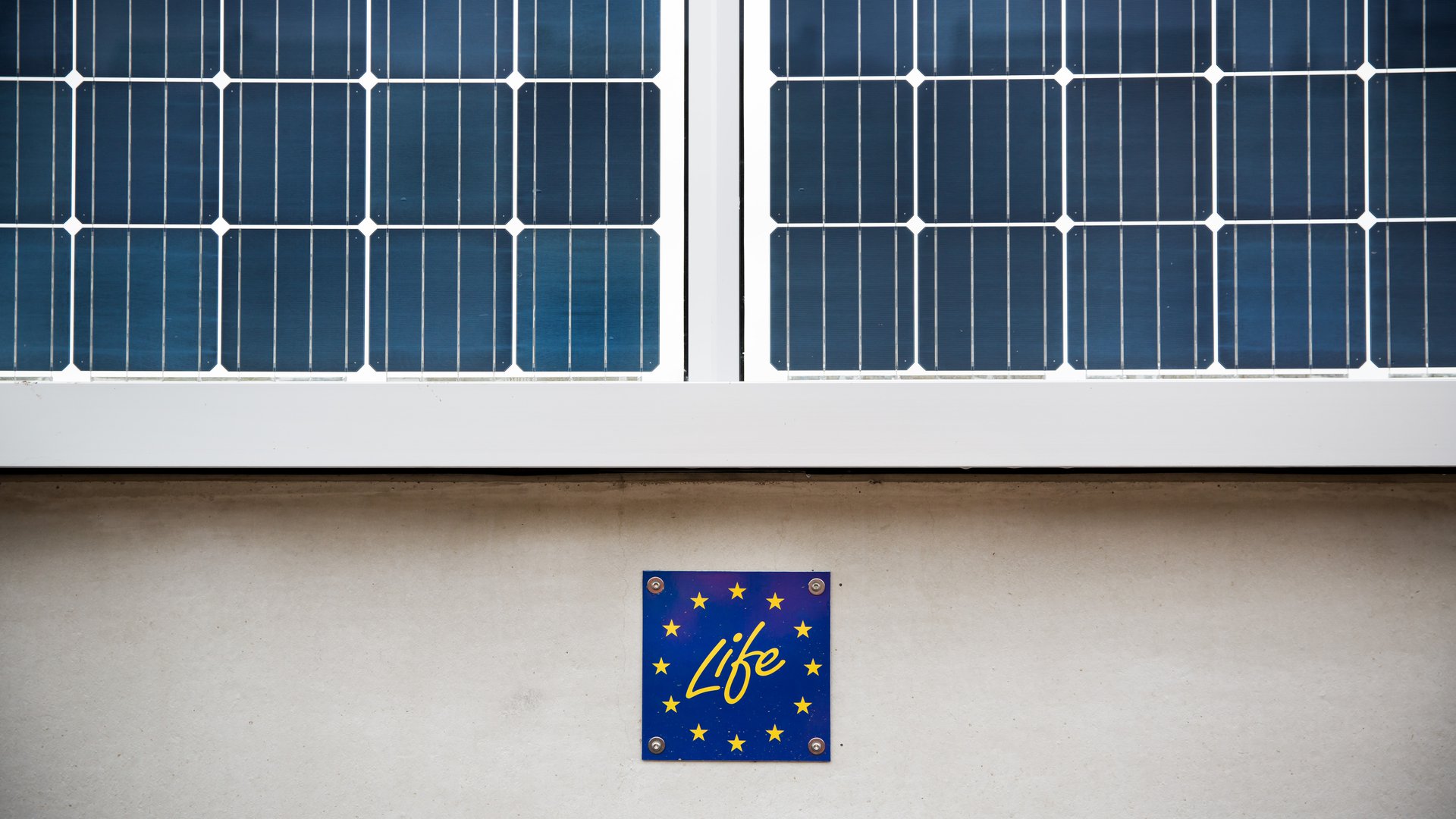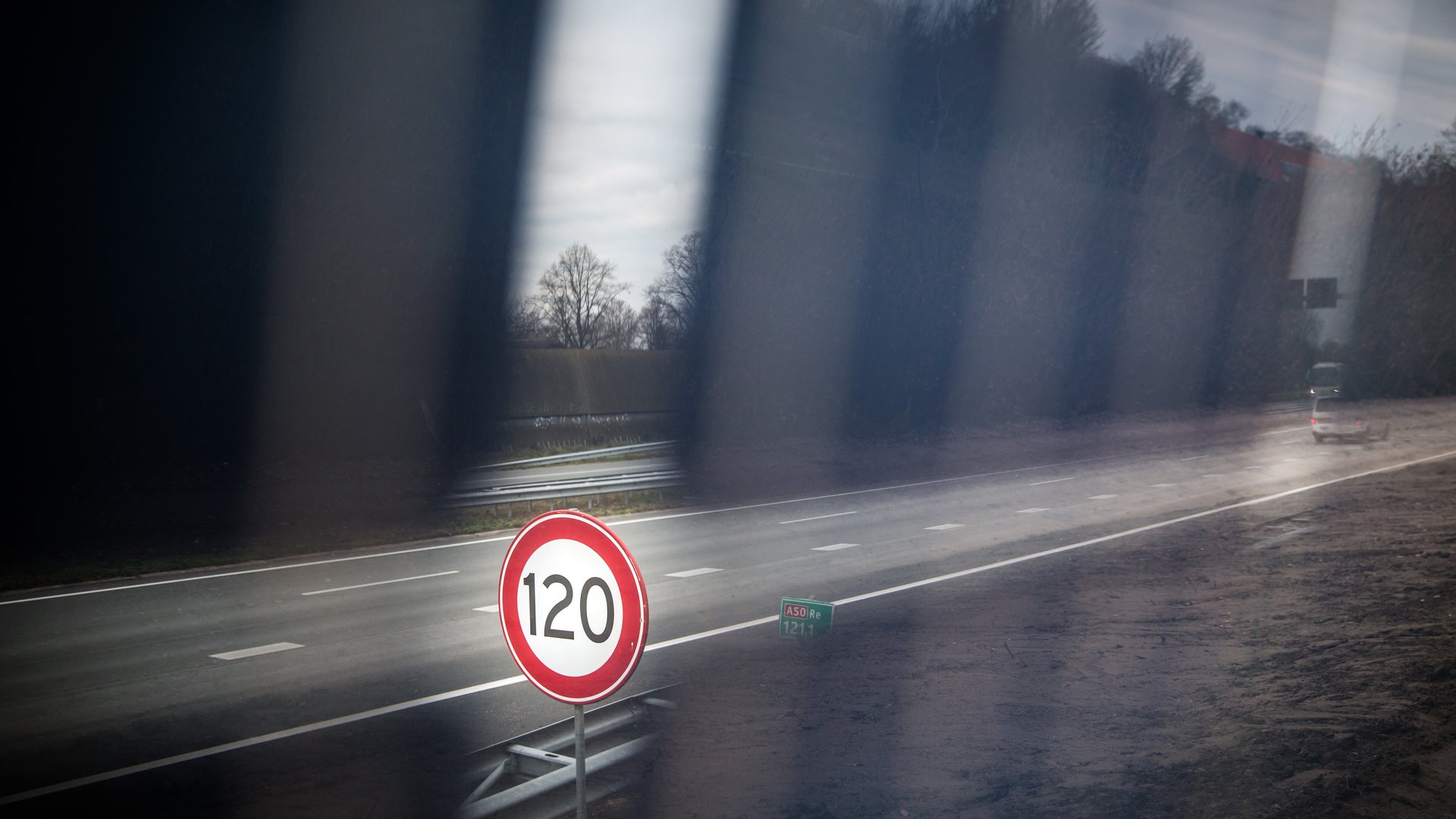
A unique noise barrier consisting of double-sided solar panels has been put up on the east side of the A50 near Uden. This barrier does not only minimize noise pollution, but also supplies green power to about forty to sixty homes. Harold Gommans, Heijmans’ project manager Sound Management, offers a glimpse behind the Solar Highways screens.
Standing behind the semi-transparent noise barrier, Harold watches traffic passing by on the A50. A long string of cars and vans driving along the Sint Oedenrode – Paalgraven section create a soft buzzing sound. Coming up to Moleneind in Uden, they pass a five-metre-high and four-hundred-metre-long noise barrier comprised of 136 integrated solar panels.
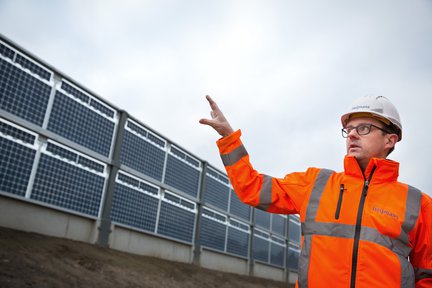
The sleek, futuristic, eye-catching barrier is a modular structure that is made up of frames, each containing two interconnected glass plates. Each glass plate contains a large number of double-sided solar cells. The noise barrier limits noise pollution while at the same time both sides of the barrier generate green energy with a capacity of 238 kWp. This makes the noise barrier perfect for Solar Highways an innovative and sustainable initiative of, Heijmans’ client, the Dutch Department of Public Works and Water Management and its partners ECN part of TNO and SEAC (Solar Energy Application Centre).
Solar Noise Barriers
“Heijmans designed and built the noise barrier of solar panels specifically for Solar Highways”, project manager Harold Gommans proudly tells us walking passed it. “Doing so, we worked and continue to work closely with our colleagues at Soil specialisms and the department of System Integration and Technique and the companies Scheuten Glas, Van Campen-Bayards and Libra Energy. We already started the development of a modular solar noise barrier in 2014. This resulted in the SONOB-system (Solar Noise Barriers).
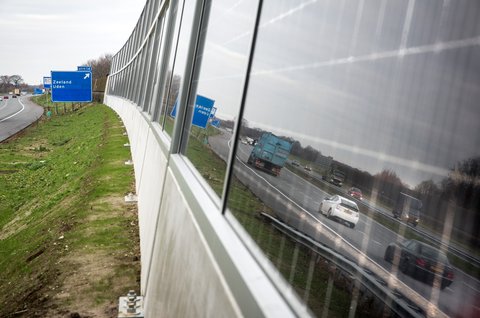
For two years, we field-tested and repeatedly improved one of the three SONOB-prototypes. Now, for the first time, our advanced noise reducing glass panels containing double sided integrated solar cells have been used on a large scale in Uden. It is part of a larger project of noise regulation measures at six locations along the A50 between Sint Oedenrode and Paalgraven, which we have been implementing since October 2017.”
Lots of sunlight
The project manager passes the six by two-metre-high frames on the back of the new noise barrier. He points up at ray of sunlight trying to break through the dark clouds. “On clear days there is lots of sunlight shining on the barrier causing the energy production to shoot up. To guarantee a maximum energy production, the noise barrier has not only been placed at the northern southern axis.”
“The construction has also been designed in such a way that the vertical steel posts create as little cast shadow as possible. That is why the glass panels have been placed precisely in the middle of these posts and why aluminium parts are chamfered. Moreover, the total barrier has a slight backward inclination. This way we catch as much sunlight as possible throughout the day while absorbing the maximum amount of noise.”
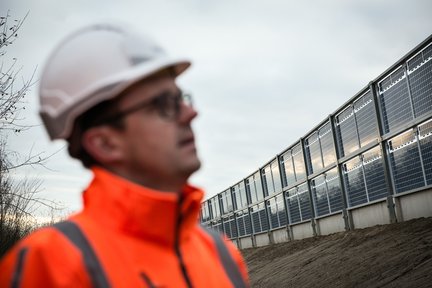
Connected
Besides developing and building the solar sound barrier, it is the responsibility of Heijmans and its partners to ensure that the integrated solar cells function perfectly. To this aim, all solar cells have been carefully fitted with metal welds on the back. These are connected to each other and run bundled toward a junction box. These boxes are then connected to a collection box, a so-called optimizer which is located in the aluminium line of each frame.
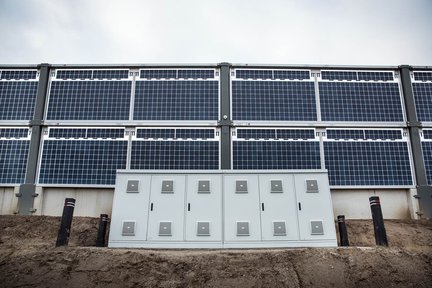
Next, the collected energy travels from the optimizers through cables in the pipe sleeves to a wide grey metal switch cabinet with inverters that is located on the nearby embankment. The connection to a second switch cabinet allows for the solar energy to run to the larger switching station.
Graffiti
To make room for the new barrier, Heijmans first dismantled the old concrete noise barrier. These concrete parts were then reused at a different Solar Highways location. A fine example of sustainability.
Harold: “The new barrier consists of tempered safety glass with a special coating. This enhances the energy production and limits the chance of dirt sticking to the surface. On top of that, it is vandalism and graffiti proof. Sensitive parts have been integrated where possible and graffiti can be removed easily and quickly. The bottom concrete plinth has also been fitted with a protective layer making it easy to remove graffiti. Nevertheless, should a glass plate break, we can simply and swiftly replace it thanks to the modular system.”
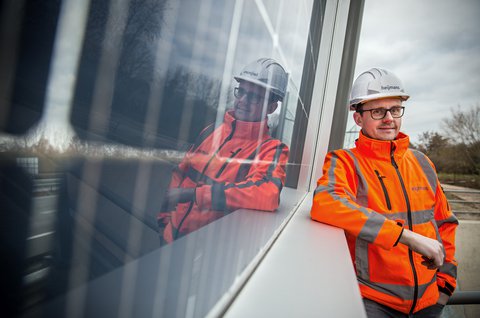
Test results
According to planning, Heijmans will be delivering the noise barriers and embankment for the Sint Oedenrode – Paalgraven project, with the exception of the solar noise barrier, in May 2019. The coming year and a half, SEAC will be carefully measuring the energy production. To this aim, five pilot schemes will be cleaned in different ways and at different times. The test results will be used to estimate the maintenance need, energy performance and financial yield of future solar noise barriers.
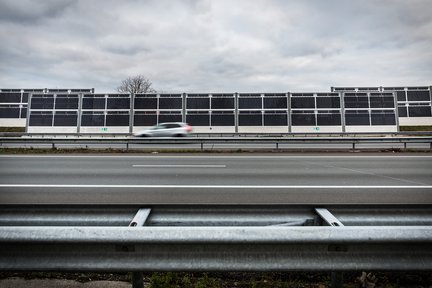
The final delivery will follow mid-2020. Harold envisions a beautiful future for this type of solar noise barrier. “In the future, Heijmans would not only develop, design and build barriers, but could also market the generated electricity. On top of that, houses in the surrounding area would be able to purchase electricity.”
Contact us



